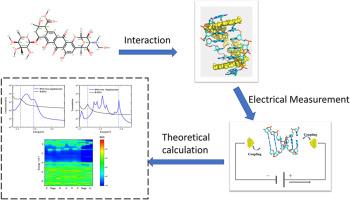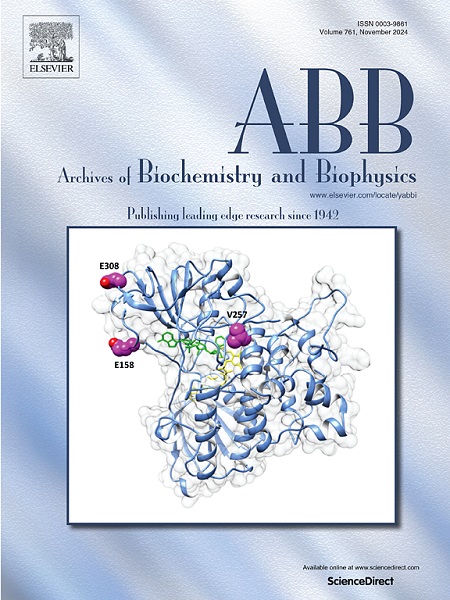The electric regulation mechanism of drug molecules intercalating with DNA
IF 3.8
3区 生物学
Q2 BIOCHEMISTRY & MOLECULAR BIOLOGY
引用次数: 0
Abstract
The insertion of small drug molecules into DNA can change its electrical properties, thereby controlling the probability of its electrical transmission. This characteristic has enabled its widespread application in molecular electronics. However, the current understanding of the intercalation properties and electronic transmission mechanisms is still not deep enough, which severely restricts its practical application. In this paper, the density functional theory and the non-equilibrium Green's function formula are combined to bind three different small drug molecules to the same sequence of DNA through intercalation, in order to discuss the impact of intercalation and molecular structure on the electrical properties of DNA. After inserting two MAR70 molecules, the conductivity decreased from 2.38 × 10−5 G0 to 3.37 × 10−7 G0. Upon the insertion of Nogalamycin, the conductivity dropped to 2.01 × 10−5 G0, only slightly lower than that of bare B-DNA. However, when cyanomorpholinodoxorubicin was inserted, the conductivity was 2.65 × 10−6 G0. In our study, we observed some common characteristics. After intercalating with drug molecules, new energy levels were induced, altering the positions of the highest occupied molecular orbital (HOMO) and the lowest unoccupied molecular orbital (LUMO) energy levels, resulting in a narrowed bandgap and consequently reduced conductivity of the complex. Furthermore, the conductivity was also related to the number of inserted drug molecules, fewer inserted molecules led to a decrease in conductivity. The results of this study indicate that embedding drug molecules can reduce or regulate the conductivity of DNA, providing new insights for its application in the field of nanoelectronics.

药物分子插层 DNA 的电调控机制。
将小药物分子插入 DNA 可以改变其电气特性,从而控制其电气传输的概率。这一特性使其在分子电子学中得到了广泛应用。然而,目前人们对插层特性和电子传输机制的认识还不够深入,这严重制约了其实际应用。本文结合密度泛函理论和非平衡格林函数公式,通过插层将三种不同的小药物分子结合到相同序列的 DNA 上,以探讨插层和分子结构对 DNA 电学性质的影响。插入两个 MAR70 分子后,电导率从 2.38×10-5 G0 下降到 3.37×10-7 G0。插入 Nogalamycin 后,电导率降至 2.01×10-5 G0,仅略低于裸 B-DNA。然而,插入氰吗啉多柔比星后,电导率为 2.65×10-6 G0。在我们的研究中,我们观察到了一些共同的特征。插入药物分子后,新的能级被诱导出来,改变了最高占位分子轨道(HOMO)和最低未占位分子轨道(LUMO)能级的位置,导致带隙变窄,从而降低了复合物的电导率。此外,电导率还与插入的药物分子数量有关,插入的分子越少,电导率越低。这项研究的结果表明,嵌入药物分子可以降低或调节 DNA 的电导率,为其在纳米电子学领域的应用提供了新的启示。
本文章由计算机程序翻译,如有差异,请以英文原文为准。
求助全文
约1分钟内获得全文
求助全文
来源期刊

Archives of biochemistry and biophysics
生物-生化与分子生物学
CiteScore
7.40
自引率
0.00%
发文量
245
审稿时长
26 days
期刊介绍:
Archives of Biochemistry and Biophysics publishes quality original articles and reviews in the developing areas of biochemistry and biophysics.
Research Areas Include:
• Enzyme and protein structure, function, regulation. Folding, turnover, and post-translational processing
• Biological oxidations, free radical reactions, redox signaling, oxygenases, P450 reactions
• Signal transduction, receptors, membrane transport, intracellular signals. Cellular and integrated metabolism.
 求助内容:
求助内容: 应助结果提醒方式:
应助结果提醒方式:


